Native
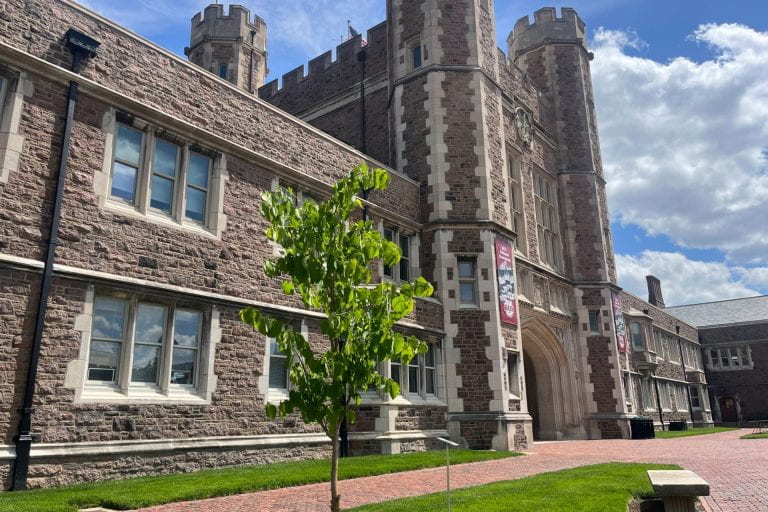
American Basswood
Arbor Walk #153, Treekeeper ID #8101
This tree is a grafted clone of the original Basswood which has been growing in Brookings Quad for more than 100 years.
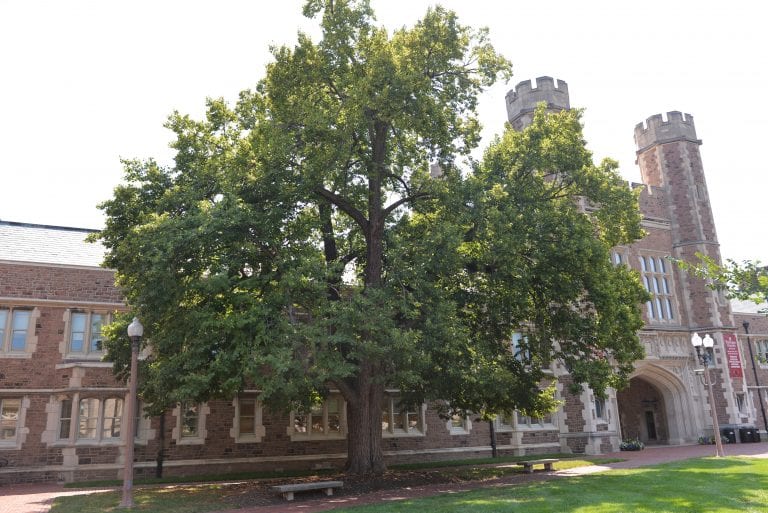
American Basswood (removed July 2023)
Arbor Walk #17, Treekeeper ID #1937
This is one of the oldest and largest trees on campus. It has large green leaves and small, sweetly scented flowers. Recently, efforts have been taken to preserve and continue on the genetic lineage of this tree whose history follows that of WashU's Danforth Campus.
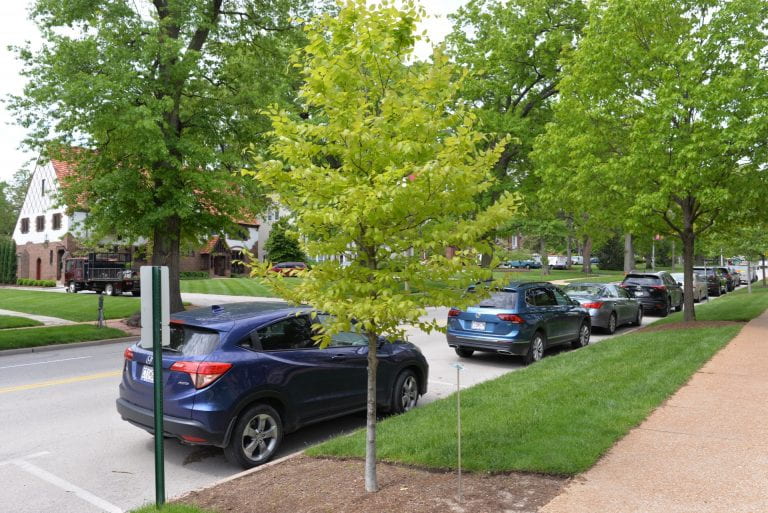
American Beech
Arbor Walk #48, Treekeeper ID #1979
This tree has dark green leaves which turn bronze in the fall. Its flowers are yellowish-green, and the female flowers yield edible beechnuts which ripen in the fall.

American Chestnut
Arbor Walk #111, Treekeeper ID #6353
The American Chestnut is a historically and cuturally important tree that unfortunately has a sad story. This species used to be one of the biggest and most numerous trees in the Eastern United States, but it is now functionally extinct.
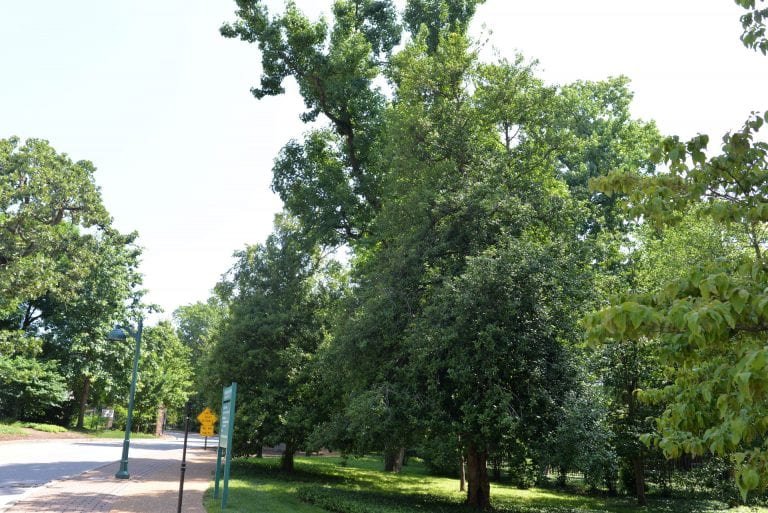
American Holly
Arbor Walk #69, Treekeeper ID #3034
The American Holly is a broad-leaved evergreen tree reaching 40 to 50 feet high, densely pyramidal in youth becoming more open and symmetrically conical with age.
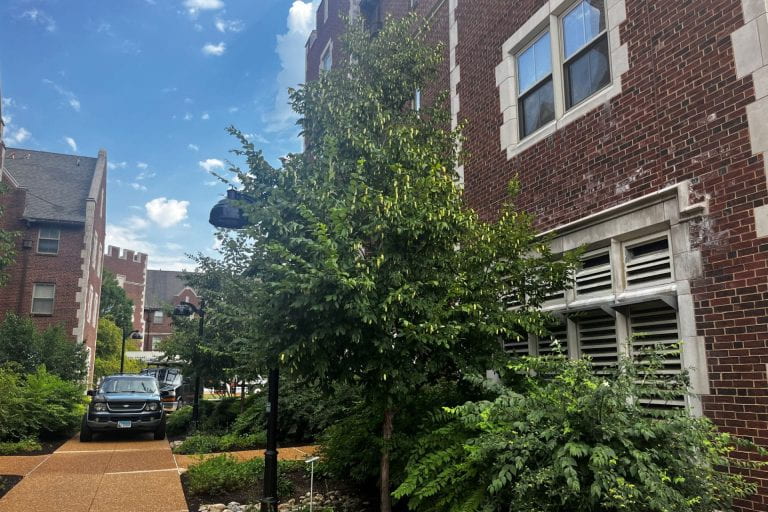
American Hop Hornbeam
Arbor Walk #112, TreeKeeper ID #3680
Native to much of the continental U.S., the American Hop Hornbeam is a great tree. It has orangish-brown, loose bark and catkins that stay on over winter making it an interesting and beautiful tree year-round.
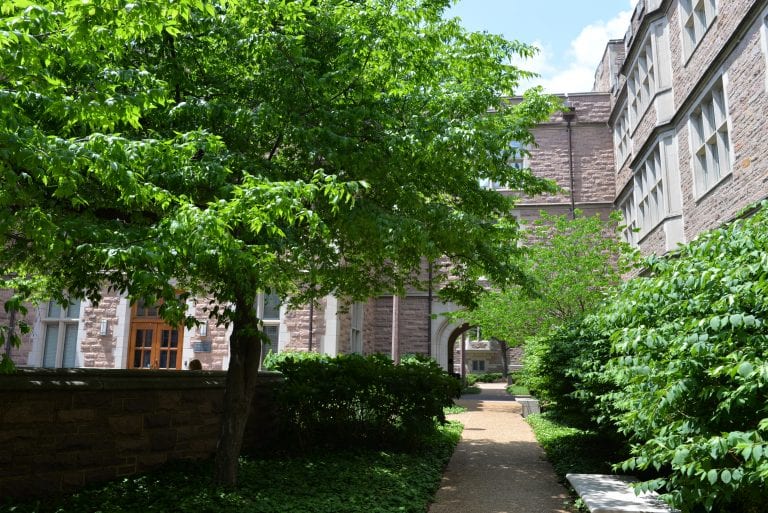
American Hornbeam
Arbor Walk #20, Treekeeper ID #1933
Native to the midwest, the American Hornbeam typically grows as an understory tree, in wetter areas. Its leaf is dark green, ovate, with doubly serrated edges.

American Smoketree
Arbor Walk #166, Treekeeper ID #6601
The American Smoketree is a Missouri native tree with fabulous color in the spring and summer, thanks to its smoke-like purple-haired inflorescences.
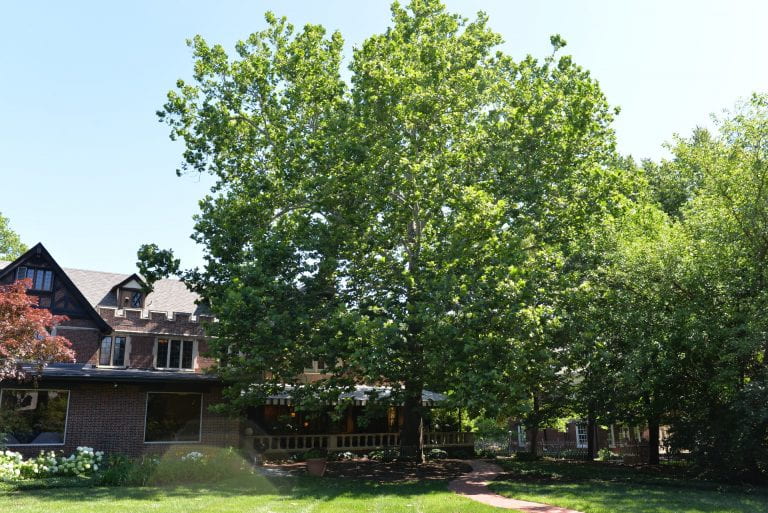
American Sycamore
Arbor Walk #60, Treekeeper ID #5449
The Sycamore is regarded as one of the largest trees native to eastern North America, and was historically prized by Native Americans for the construction of dugout canoes. Ecologically, they are early colonizers to newly available habitat, and support animal shelters as they mature.
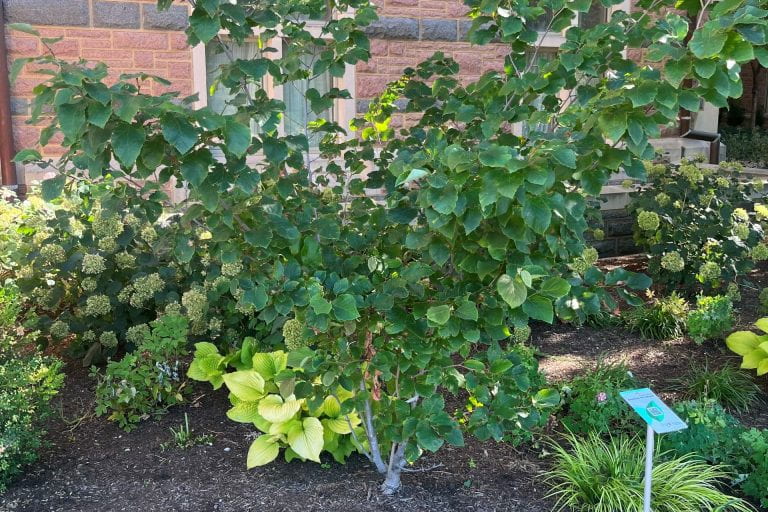
American Witchhazel
Arbor Walk #119, TreeKeeper ID #6211
The American Witchhazel is one of the few deciduous woody plants that flowers after the leaves fall. It typically flowers during October to December.
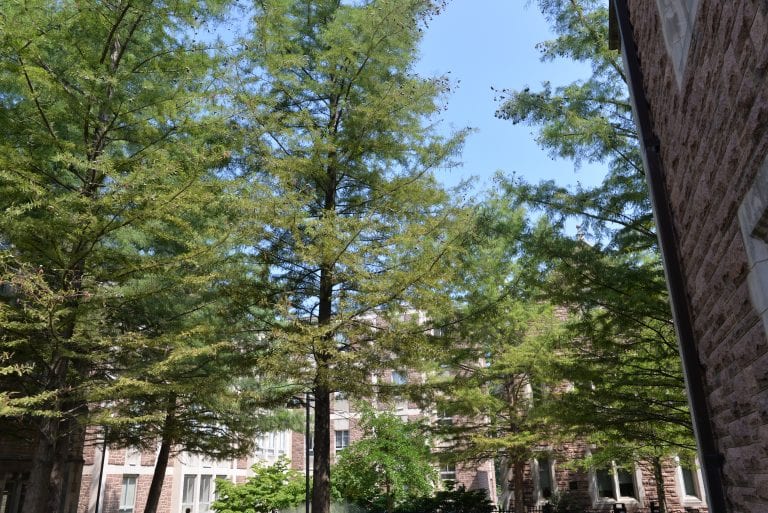
Bald Cypress
Arbor Walk #16, Treekeeper ID #1427
This tree is native to wetlands and swamps in the Midwest but is adaptable to urban conditions. Its needlelike foliage turns russet red and drops in the fall.

Black Maple
Arbor Walk #173, Treekeeper ID #6384
Alternatively described as a closely related species of Sugar Maple (Acer saccharum) or as its subspecies, the Black Maple overlaps in range with the Sugar Maple but shifted farther west into the Midwestern Plains.
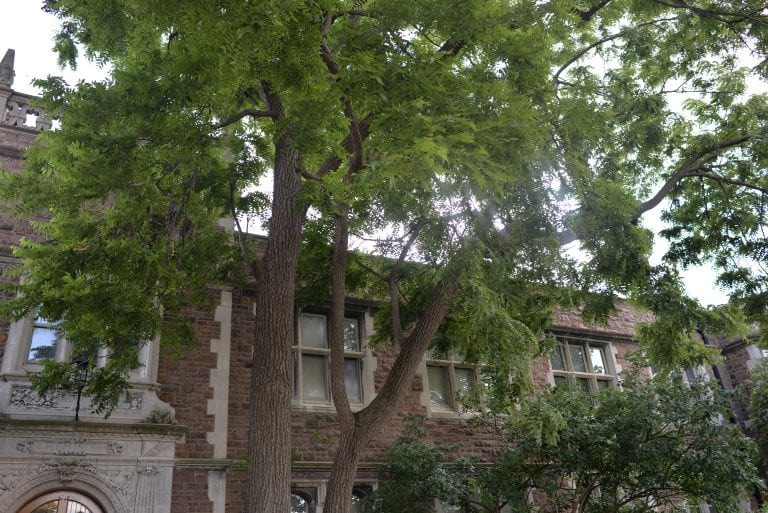
Black Walnut
Arbor Walk #18, Treekeeper ID #1386
This is a large native tree whose wood is used for woodworking in the furniture and cabinet industry.
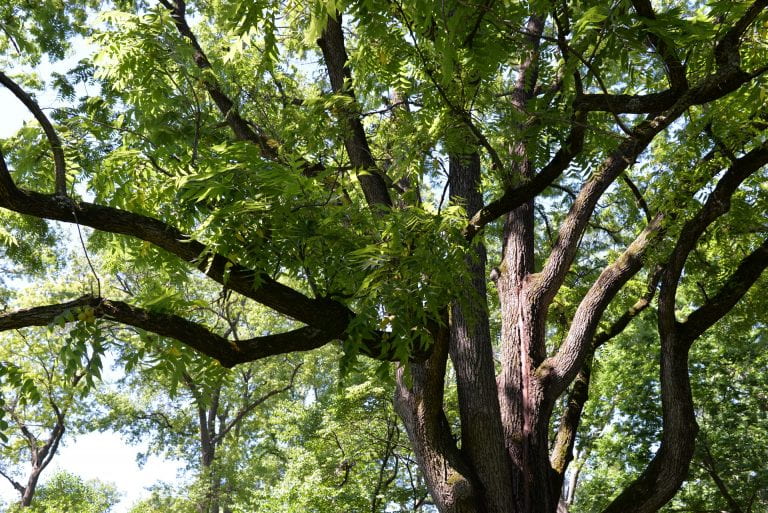
Black Walnut (Deaccessioned)
Arbor Walk #61, Treekeeper ID #5016
This is a large deciduous tree common to woodlands in the eastern United States from Massachusetts to Texas. It is natively found in rich woods and fertile river valleys across the state of Missouri.
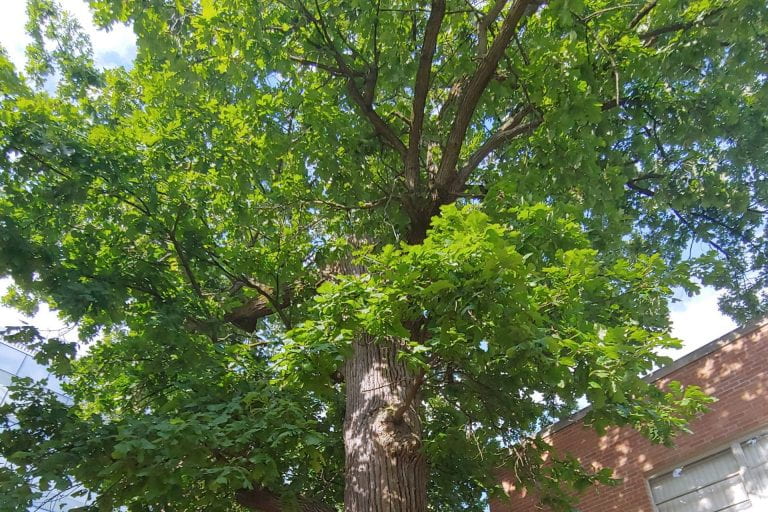
Bur Oak
Arbor Walk #108, Treekeeper ID #1757
This tree is in the Fagaceae family and is native to Missouri. It is a deciduous tree with broad and rounded crown, which is good for shading. The leaves are leathery, dark green and turn to yellow-brown in fall. The oval acorns are large in size with fringed cups.

Butternut
Arbor Walk #161, TreeKeeper ID #6339
Although this tree has a broad range within the Upper Midwest and Northeast United States, it is uncommon in most of its range, being overshadowed by its ubiquitous relative Juglans nigra, the black walnut. Its lack of prominence is mainly caused by the deadly butternut canker, which only affects J. cinerea.
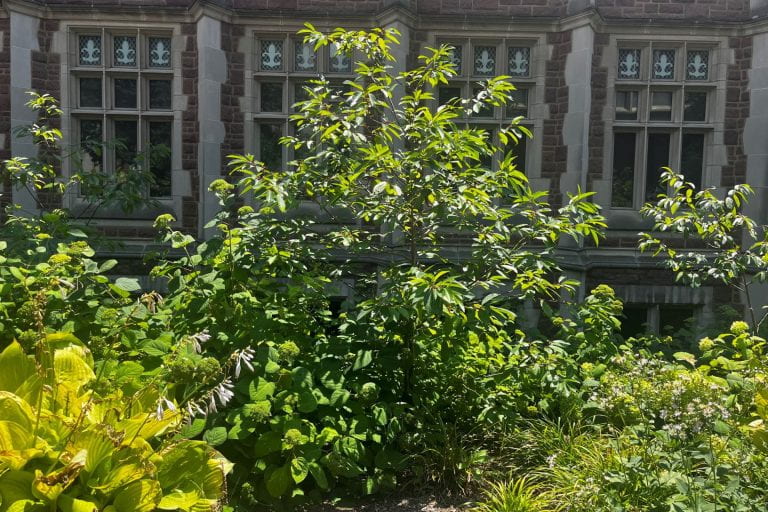
Carolina Buckthorn
Arbor Walk #130, TreeKeeper ID #5899
Even though it is called a buckthorn, Carolina Buckthorn has no spines. The shrub is well known for its bright red drupes during the summer. The fruit eventually mature to black and attracts many wildlife species, especially birds.
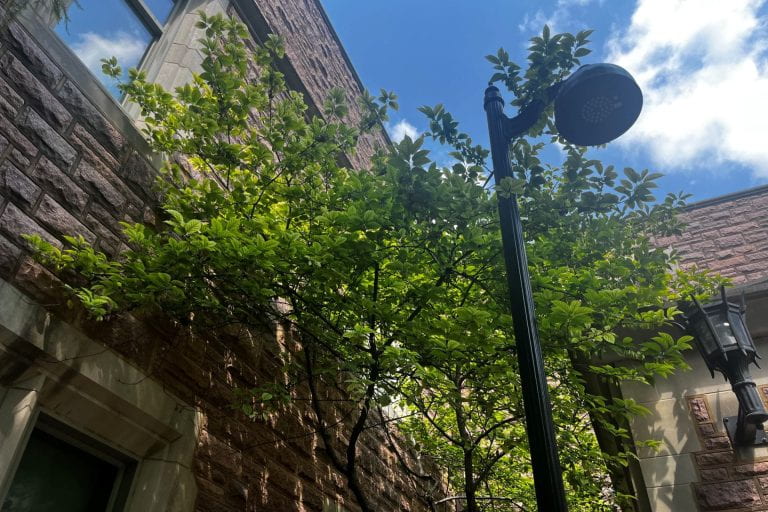
Carolina Silverbell
Arbor Walk #132, TreeKeeper ID #1468
The best place to find this plant in the wild is the Great Smokey Mountains where they thrive. Squirrels love the four-winged, dry fruit, and Tennessee beekeepers describe it as a great honey tree. The wood is also sometimes used for cabinets, veneer, and carvings.
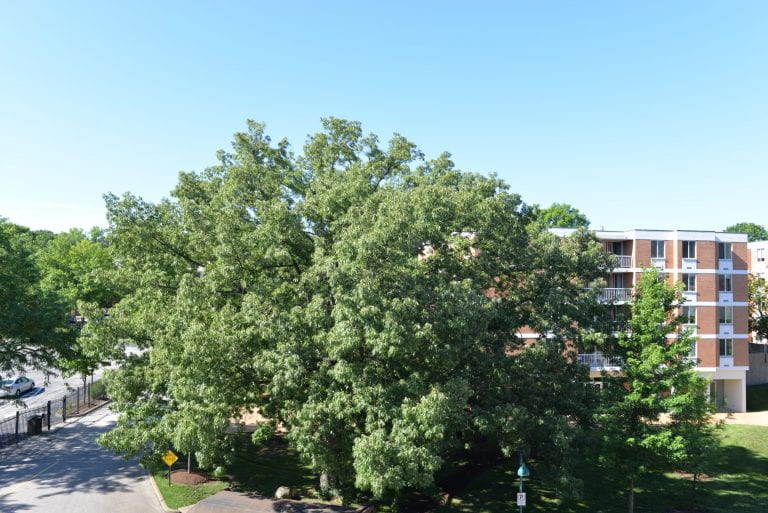
Cherrybark Oak
Arbor Walk #71, TreeKeeper ID #3472
Cherrybark Oak is a medium to large-sized deciduous tree native to the Southern US including the southeast corner of Missouri. The Cherrybark Oak looks very similar to another Missouri native, Southern Red Oak. So much so, that this tree was mislabeled as a Southern Red Oak for many years in the Arboretum.
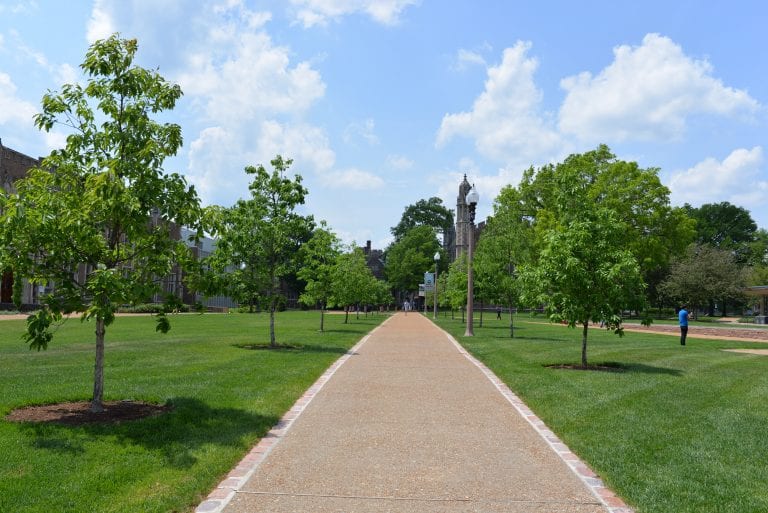
Chinkapin Oak
Arbor Walk #26, Treekeeper ID #1345
Native to the Midwest, the Chinkapin Oak can be easily recognized due to its small, toothed leaves. Unlike most oaks, the Chinkapin has unusually flaky and fissured bark.
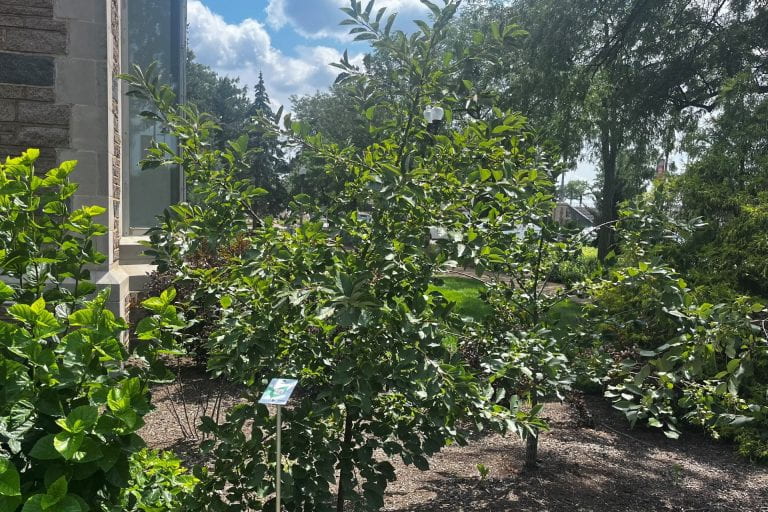
Chokecherry
Arbor Walk #123, TreeKeeper ID #7105
The wild Chokecherry is usually found in dense thickets due to its vast root system which can sprout runners, but on campus you will find them managed to prevent this. It blooms beautiful white flowers that eventually turn into dark purple fruit.
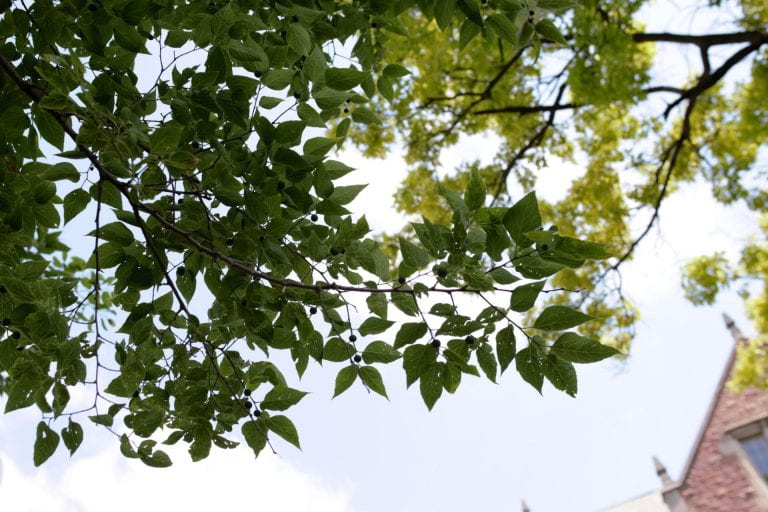
Common Hackberry
Arbor Walk #8, Treekeeper ID #6122
This native tree performs well in urban conditions and is easily identified by its distinctive corky bark. But be careful because there are other relatives that are native to Missouri that have very similar bark.
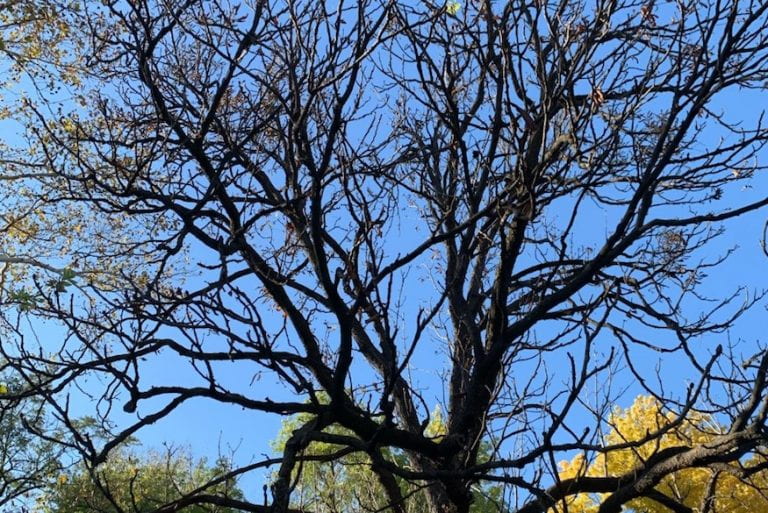
Common Horse Chestnut
Arbor Walk #64, Treekeeper ID #5490
Despite being widely planted as an easy-to-grow shade tree for streets and landscapes throughout the Midwest, the Common Horse Chestnut is originally native to the Balkan region of Europe. The tree features showy white flowers in spring which in summer transition into fruit, consisting of one or two seeds encased in a spiny husk.
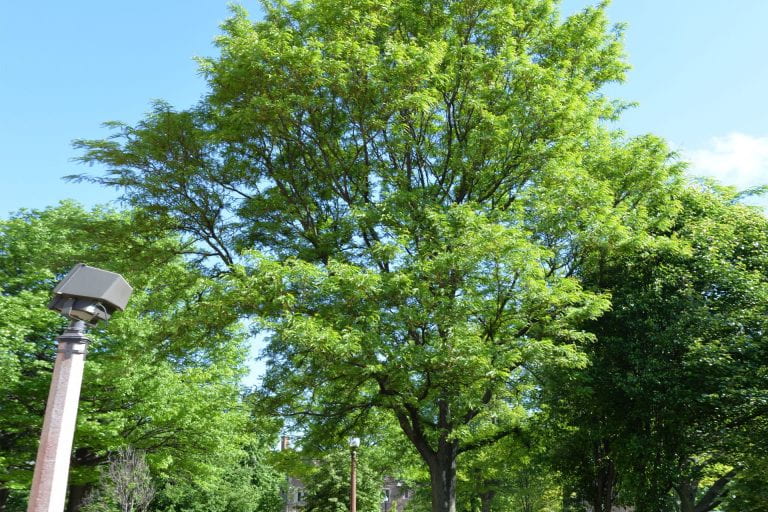
Common Thornless Honeylocust
Arbor Walk #28, Treekeeper ID #1610
This is a native plant, but if found in nature, its bark would likely be covered in long, sharp thorns. Arborists tend to plant this natural, thornless variant of the tree to allow people to see its beauty without obtaining injuries.
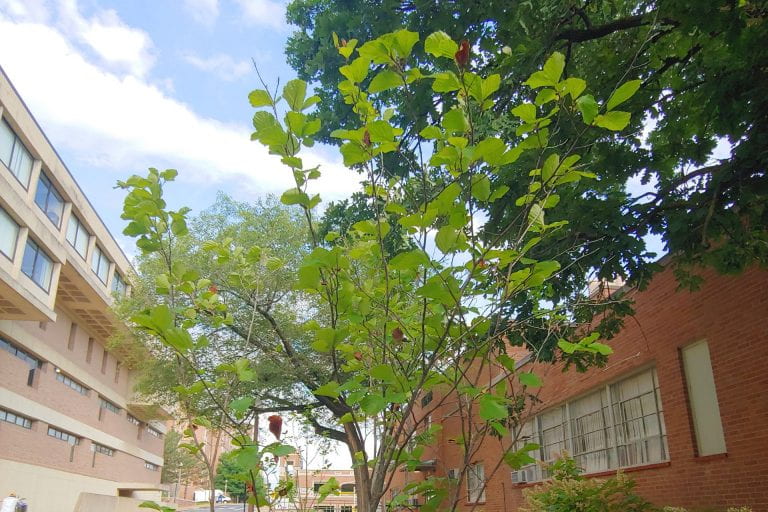
Cucumber Tree Magnolia
Arbor Walk #107, Treekeeper ID #5717
This tree is in the Magnoliaceae family and is native to Missouri. The cucumber tree is named by its cucumber-like fruit. The fruit is 2" to 3" long, slightly curved, and cylindrical, and to add to the cucumber appearance, the immature fruit is also green.
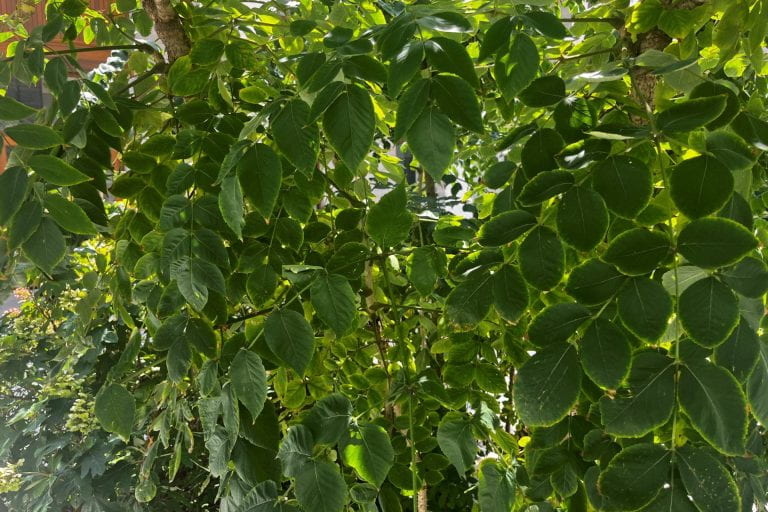
Devil’s Walking Stick
Arbor Walk #121, TreeKeeper ID #4652
This tree has many interesting features including late summer flowers, juicy black drupes, gigantic compound leaves, and sharp prickles covering many parts of the plant.
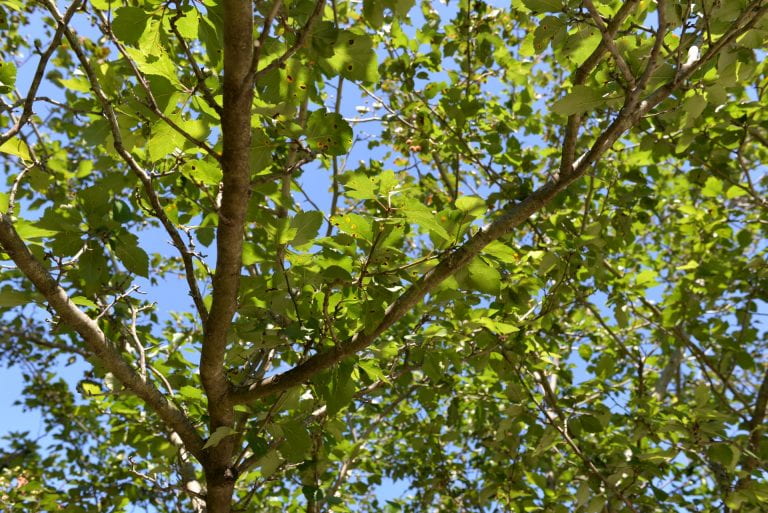
Downy Hawthorn
Arbor Walk #67, Treekeeper ID #1716
The Downy Hawthorn is a deciduous tree in the rose family, and is native to the Midwest. Despite the unpleasant scent and the presence of long thorns, the tree is much loved for the beauty of its flowers in the spring and fruits in the summer.
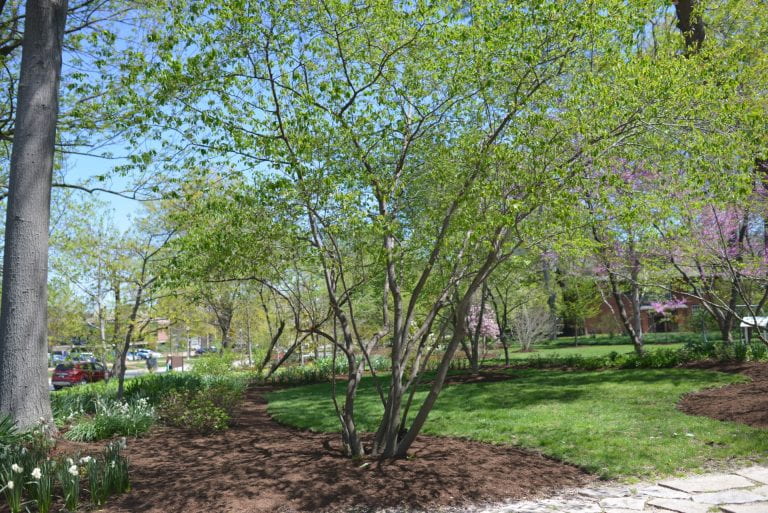
Downy Serviceberry
Arbor Walk #40, Treekeeper ID #4578
This Missouri native tree offers edible, berry-like fruit that changes color throughout the seasons. The competition for the fruit is stiff because they are a favorite of many bird species.

Drummond’s Red Maple
Arbor Walk #172, Treekeeper ID #3933
Comparatively to the other varieties of red maple, this variety inhabits areas with wetter sites and milder winters, such as swamps across the southeastern US.
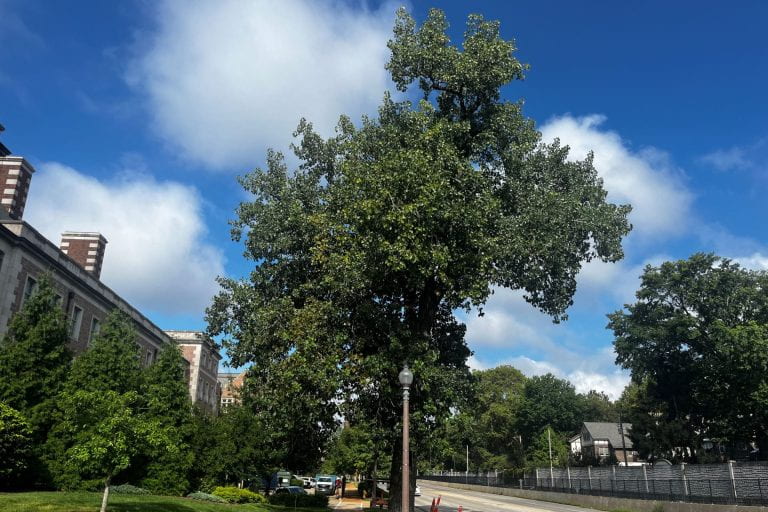
Eastern Cottonwood
Arbor Walk #167, TreeKeeper ID #1525
Native to much of the Eastern United States and Southern Canada, with a tall form reaching up to 100 feet in height and flexible fluttering leaves, the Eastern Cottonwood is a staple of lowlands across North America.
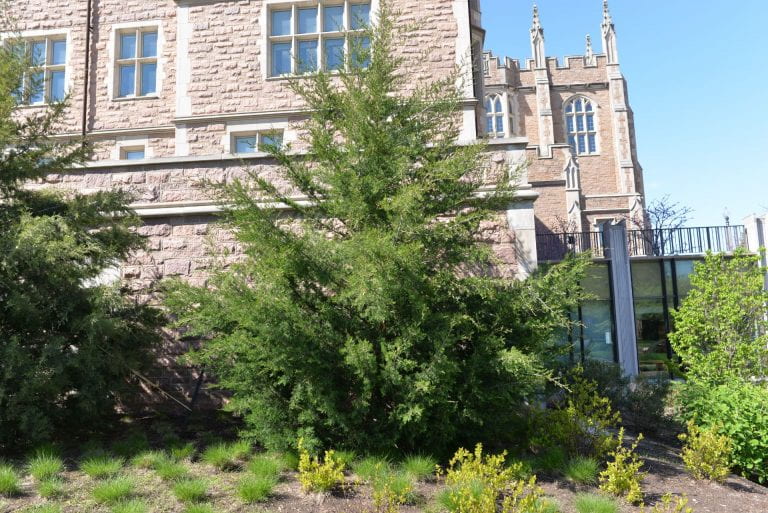
Eastern Red Cedar
Arbor Walk #51, Treekeeper ID #1648
This tree is native to Eastern North America; In Missouri, it grows in a variety of habitats across the state and is tolerant of a wide range of soil conditions.
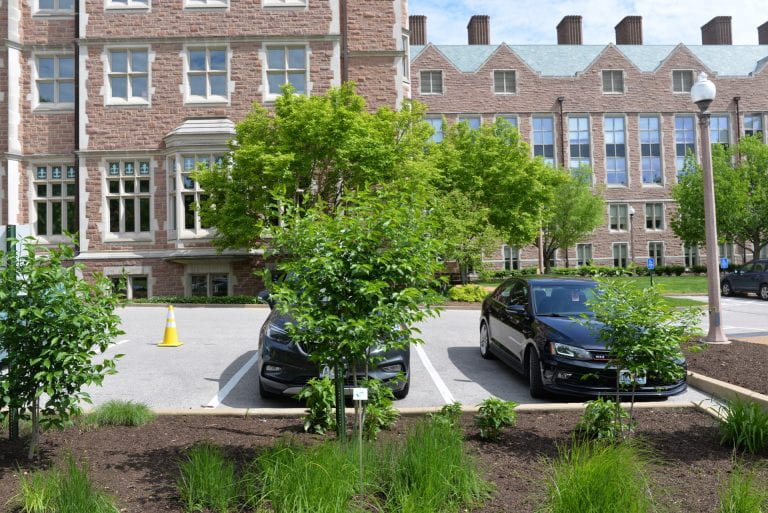
Eastern Wahoo
Arbor Walk #47, Treekeeper ID #6770
This small tree is a Missouri and Chicago-region native offering attractive bright red fruit and beautiful color in the fall.
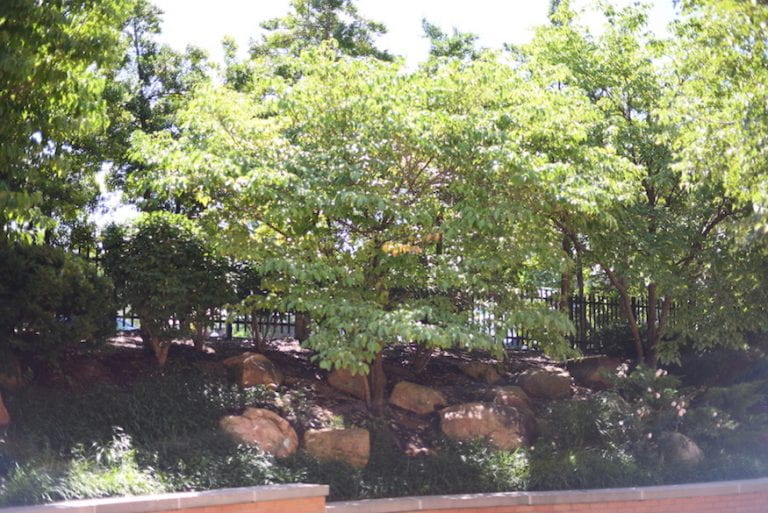
Flowering Dogwood
Arbor Walk #81, Treekeeper ID #3692
This is a small, beautiful, adaptive, flowering tree, blooming in early spring. It has white flowers and oval dark green leaves which turn into shades of red in the fall and it grows bitter, inedible bright red fruits.
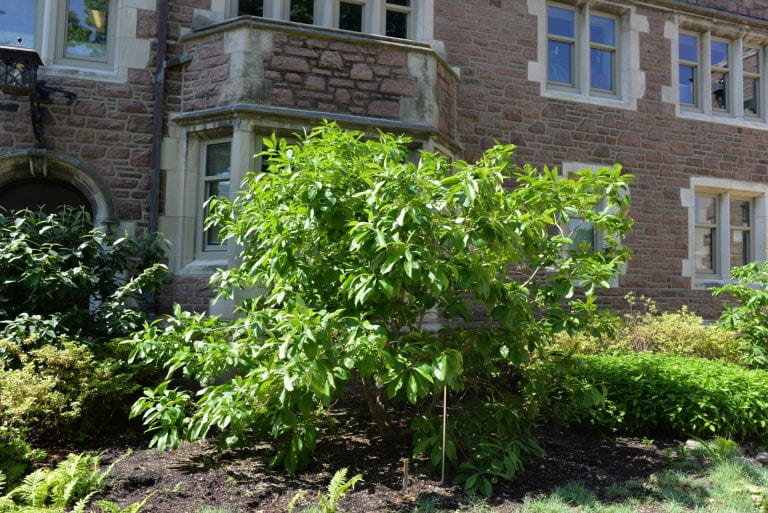
Fringe Tree
Arbor Walk #33, Treekeeper ID #5592
This tree is a Missouri native which grows easily in fertile, moist soil. In the wild, it typically grows at forest transition boundaries, along stream banks, or in the margins of limestone glades.
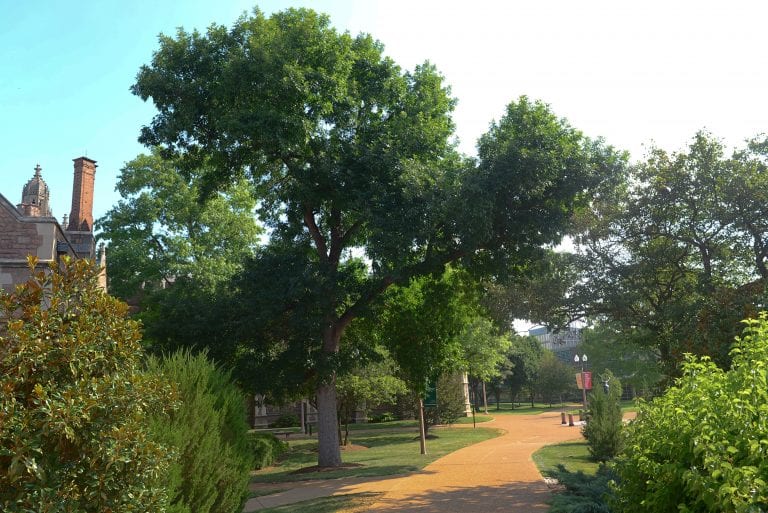
Green Ash
Arbor Walk #23, Treekeeper ID #2384
This native tree species is threatened by the Emerald Ash Borer. Since its discovery in 2002, the Borer, a native of Asia, has killed hundreds of millions of ash trees in North America.
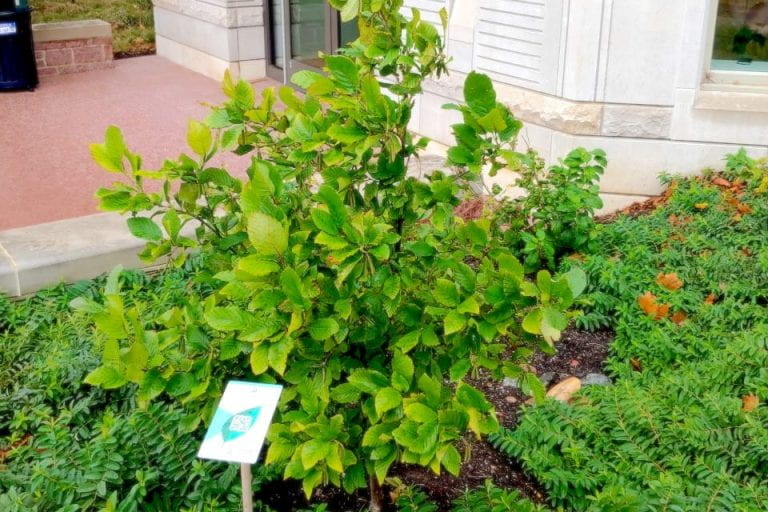
Hazel Alder
Arbor Walk #97, Treekeeper ID #6102
Hazel Alder is a multi-stemmed small tree and can grow to 20′ high and up to 15′ wide forming thickets by suckering. It is native from Nova Scotia to Illinois and Missouri south to eastern Texas and northern Florida. It is an ideal selection for naturalizing or rain gardens.
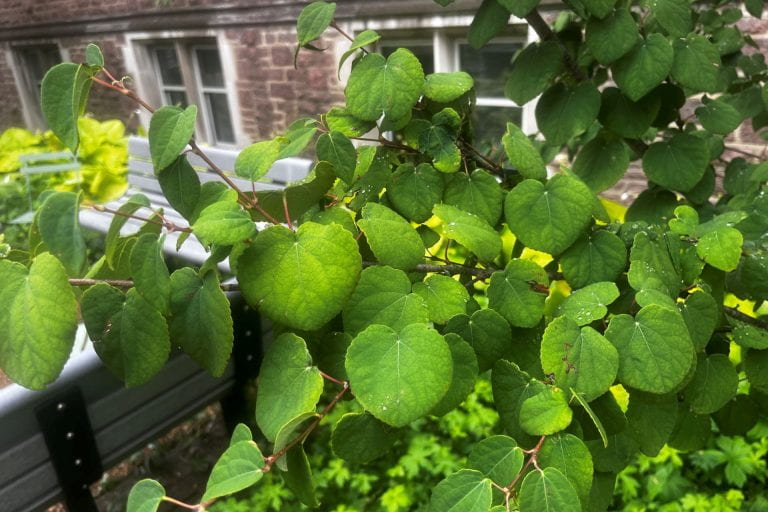
Katsuratree
Arbor Walk #106, Treekeeper ID #5947
The Katsuratree's native range in Japan and China. The 'Rotfuchs' cultivar is most commonly cultivated in the United States. In cultivation, it can grow to 60' tall and is noted for its beautiful shape and attractive foliage.
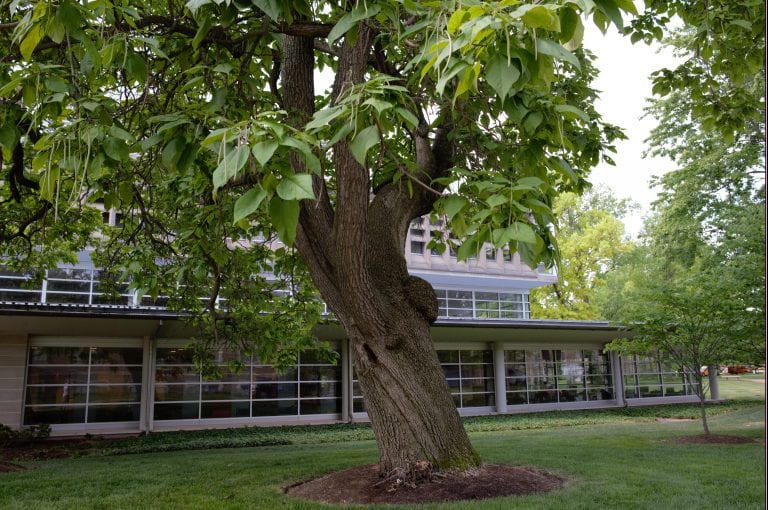
Northern Catalpa
Arbor Walk #10, TreeKeeper ID #1781
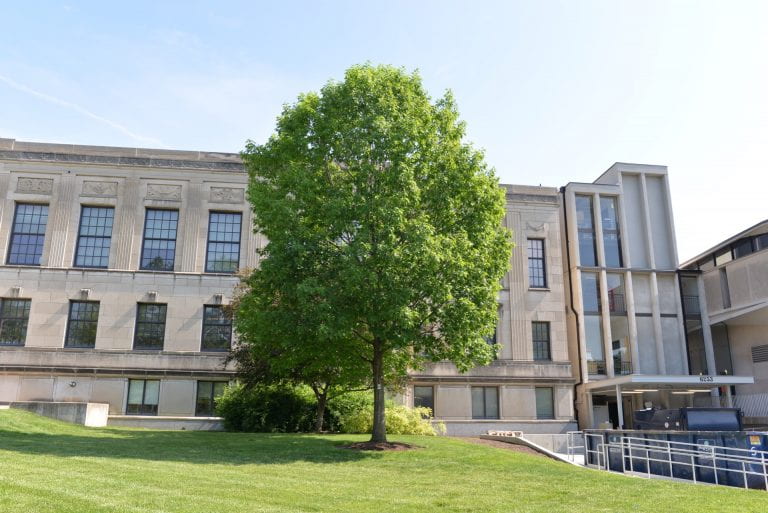
Northern Red Oak
Arbor Walk #58, TreeKeeper ID #1566
This Midwest native's beautiful dense crown provides good shade, and along with its ability to tolerate air pollution and drought, has made it a landscaping favorite.

Northern Spicebush
Arbor Walk #129, TreeKeeper ID #6608
The Northern Spicebush is a shrub which is best known for its aromatic leaves and twigs, which give off a "spicy" smell not unlike in scent to its Lauraceae relatives, sassafras and cinnamon. This bush is widespread throughout the woodlands of the Eastern United States, often occupying shady areas underneath a hardwood canopy.
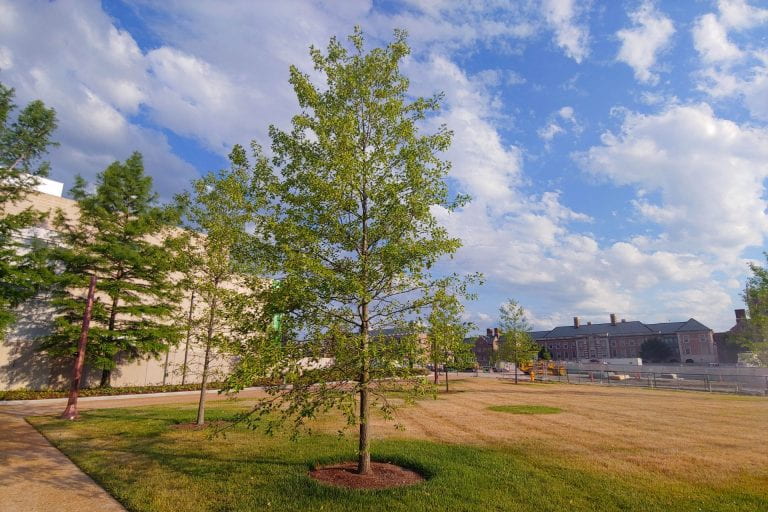
Nuttall Oak
Arbor Walk #104, TreeKeeper ID #6084
The Nuttall Oak is a deciduous shade tree that is well-suited to urban settings due to its tolerance against wet soils, drought conditions, and most disease and pest problems. This is a fast-growing oak tree that is capable of growing in many different kinds of soils.

Overcup Oak
Arbor Walk #56, TreeKeeper ID #2039
Though adaptable to most soils, this Missouri native tree is particularly prevalent in lowlands, floodplains, swamps and bayous in the Southeastern US and in the Mississippi River Valley.

Ozark Witch Hazel
Arbor Walk #110, TreeKeeper ID #6201
One of the newer additions to the arboretum, this woody plant showcases ribbon-like flower clusters when in full bloom.
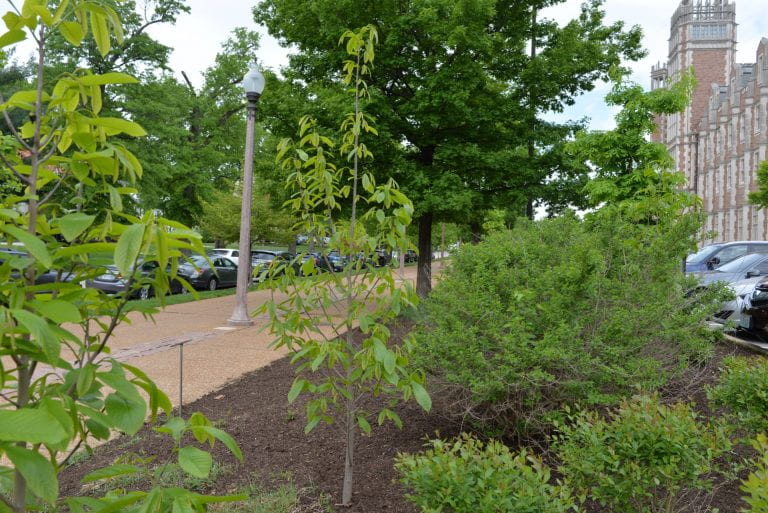
Pawpaw
Arbor walk #50, TreeKeeper ID #1801
This Missouri native has dark purple flowers in the spring, elongated edible fruit in the summer, and a yellow to yellow-green fall color which all add to the appeal of this small understory tree.
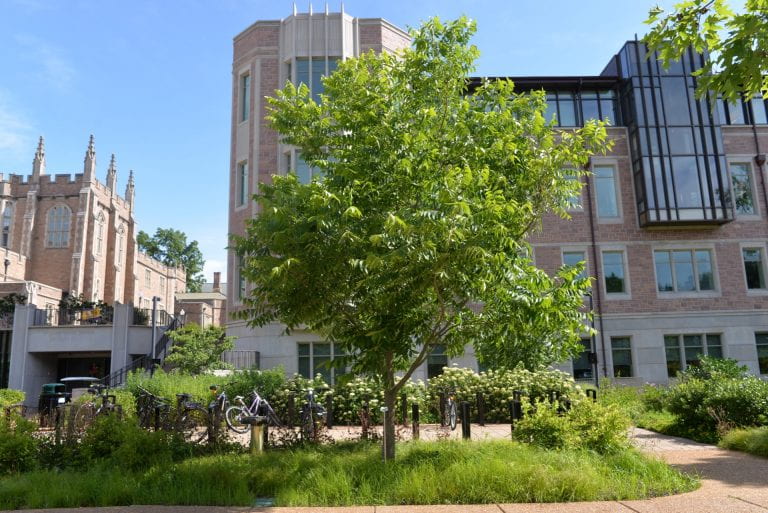
Pecan
Arbor walk #54, TreeKeeper ID #1424
This Missouri native tree is predominantly found in the Mississippi River Valley, and in the American South where it is cultivated as an important commercial nut crop.
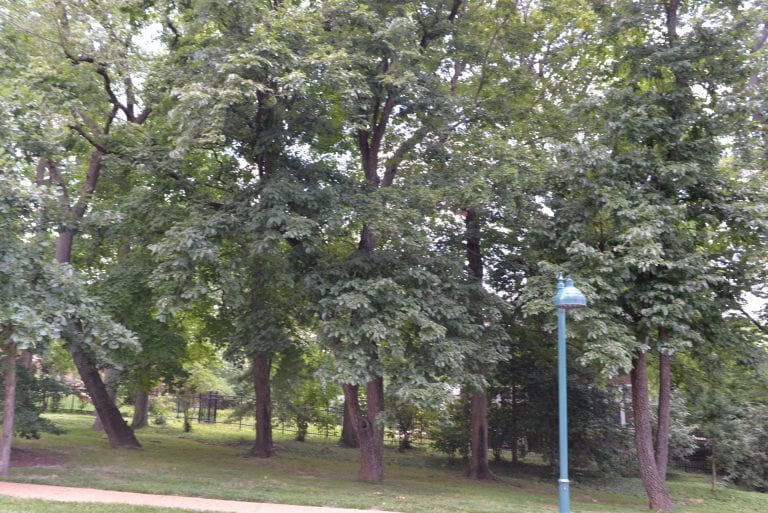
Persimmon
Arbor walk #70, TreeKeeper ID #3345
The Persimmon tree is native to the Southeastern U.S. and is easily recognized in winter by its unusual rugged, blocky bark.
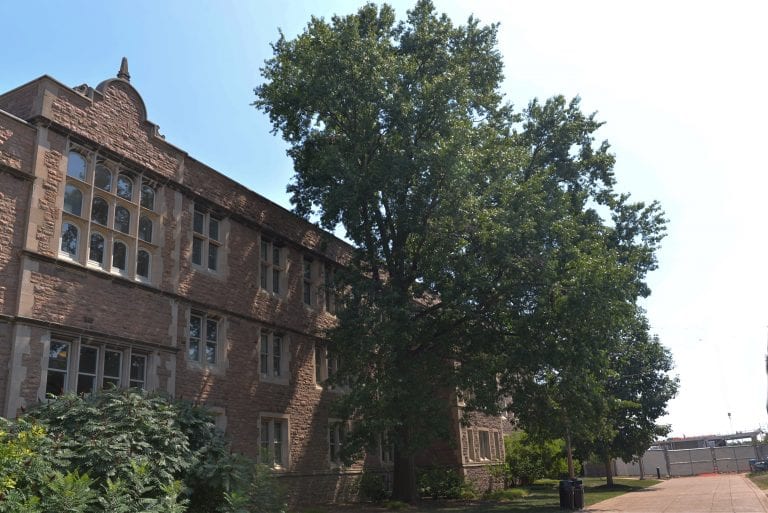
Pin Oak
Arbor walk #19, TreeKeeper ID #1810
The pin oak is a popular tree that is planted because of its quick growth and the dense shade it provides. It has a distinct form that is pyramidal during early maturity but turns more oval later in life.
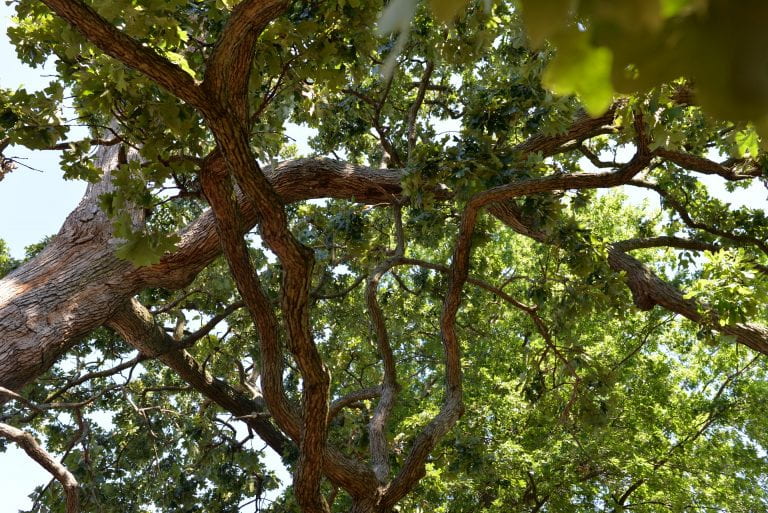
Post Oak
Arbor walk #68, TreeKeeper ID #2930
Post Oak is a North American species of oak in the white oak section. It is a slow-growing oak that lives in dry, poor soils, and is resistant to rot, fire, and drought.
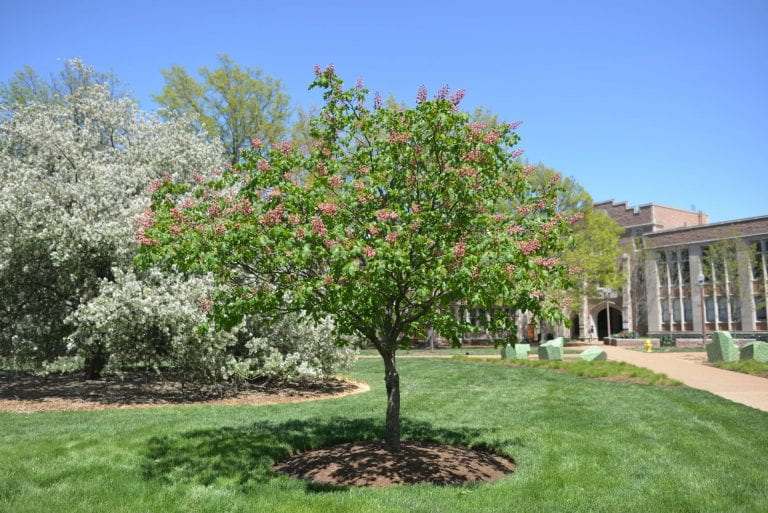
Red Horsechestnut
Arbor Walk #27, TreeKeeper ID #1622
The Red Horsechestnut is a hybrid between the European Aesculus hippocastanum (Horsechestnut) and the North American A. pavia (Red Buckeye). This small deciduous tree grows on average to medium moist well drained soil, in full to part sun.
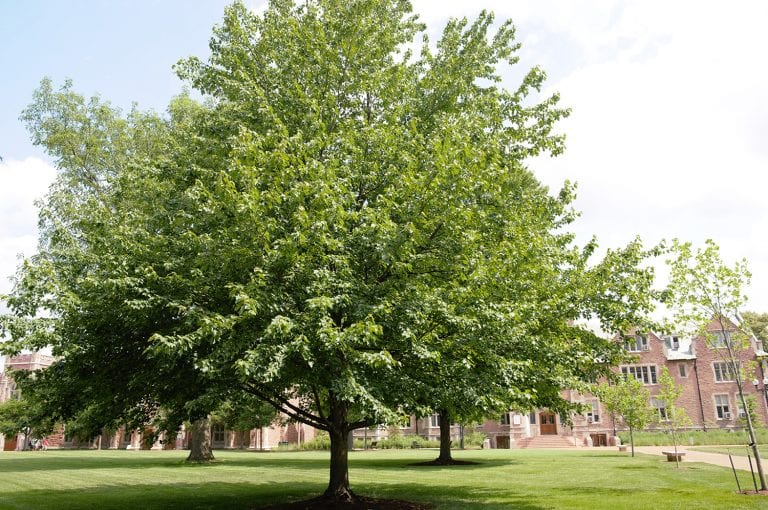
Red Maple
Arbor Walk #9, TreeKeeper ID #1875
This is a large, native, shade tree and its reddish fall color is one of its most dramatic features. The flowers, seeds, and twigs on the Red Maple also have red color spread throughout.